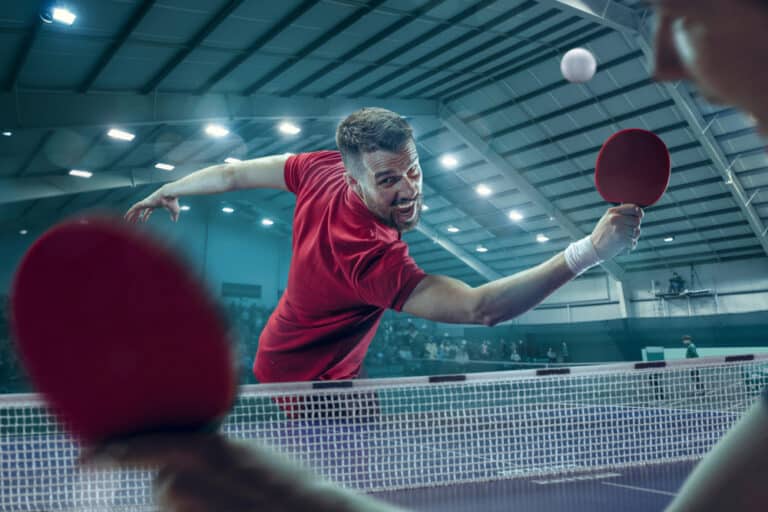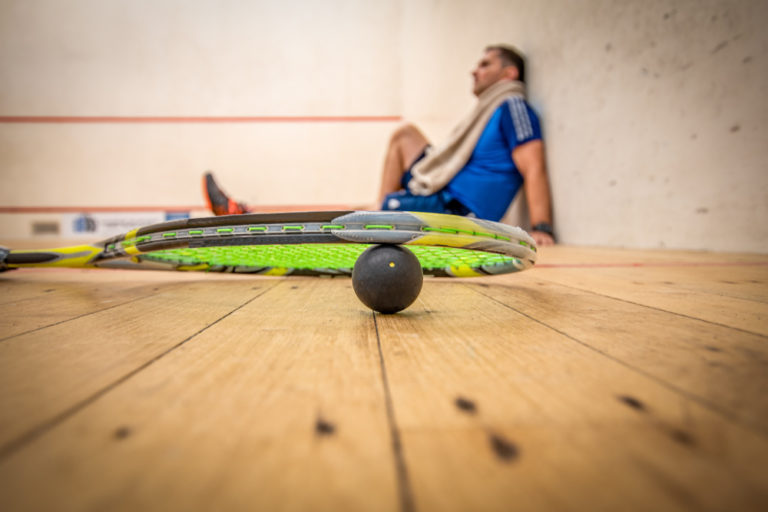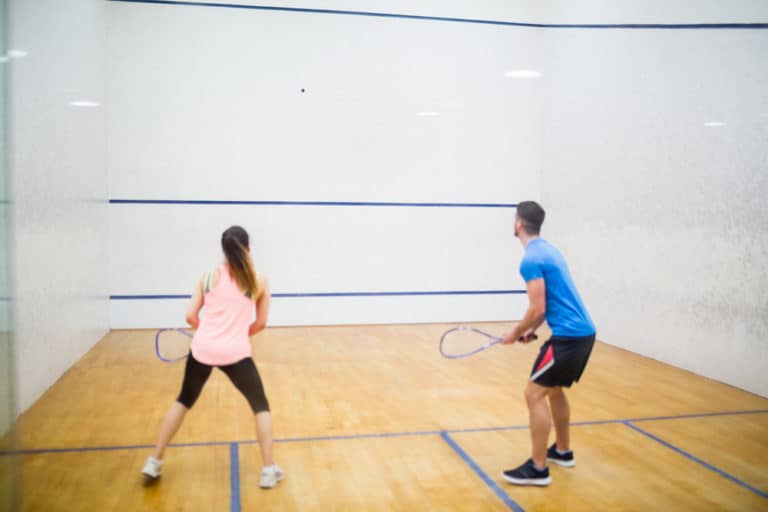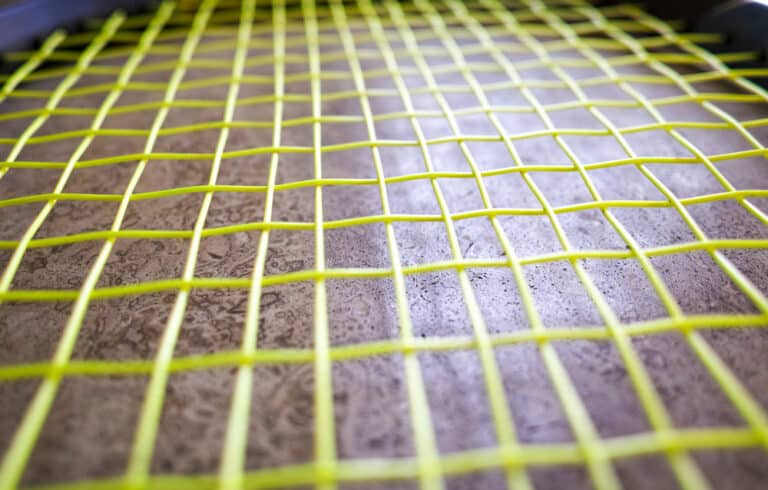Which Squash Balls Are The Fastest?
Squash is a fast-moving racquet sport played on a wooden floor with rubber balls. Depending on the player’s skill level, these balls have varying speeds and bounces. The slower and lower balls are for the more advanced players and pros, while the faster balls are for beginners and intermediate players.
Squash balls are rated using colored dots; the fastest squash ball is the one with the blue dot. This one offers the highest bounce and speed and is typically used by beginners that need a high bouncing and faster ball to make learning the game easier.
Understanding why beginners need a faster and bouncier ball, and the different types of squash balls will give you a good idea of which ball you should use for your game and how advancing through the dot colors increases the game difficulty.
What Are The Most Common Squash Ball Colors & Their Skill Levels
The most common dot colors on squash balls are blue, yellow, double yellow, and red.
The blue dot ball is recommended for rank beginners; the red ball is better for novice players who are better at beginner level but not intermediate level. The double yellow is the ball used for professional competitions.
The yellow single dot ball is used for players from the intermediate level up to advanced players, and as they advance to the professional level, the double dot balls with the lowest bounce are the default ball choice.
Why Do Beginner Squash Players Need Faster Squash Balls
Squash is a fast-paced, high-tempo sport, and the ball has a massive impact on the game as well as the ability of the players to keep the fun going.
The fastest squash ball has a blue dot, and this means that this ball will bounce higher and move faster than the other color balls.
For beginners, it will be easier to hit the ball back to the wall and the opponent and develop the skills needed to progress to higher levels where the bounce and speed of the squash balls get gradually slower and slower.
Squash has a variety of shots from balls that travel down the line of the side walls and back to the corners to drop and boast shots hit softly off the wall to the front of the court and line drives that can bounce off the court’s back wall.
The higher the ball bounces and faster it travels, the easier it is for players learning the game to execute these shots, as it gives them much more time to set up and prepare for the shot they want to play.
Because squash rackets are smaller and lighter than those in racquetball and tennis, the ball needs to bounce higher for beginners to get the feeling of hitting the ball from the middle of the racket and building their confidence in their game.
Double Yellow, Red, Orange, And Green Dot Balls
At the top levels of the game, the double-dot yellow balls are the lowest and slowest, but players at this level are very fit and flexible and move quickly across the court to reach the ball before it bounces twice – which means the loss of the point.
For amateurs at an intermediate or even an advanced level, the double dot balls would make the game very difficult as they do not have the fitness and skill levels to reach the ball and play it before it bounces twice.
Not only that but trying to play squash with a double dot ball or one not suited to your skill levels would negatively affect a player’s confidence and enjoyment of the game, and this is why it is essential to play the game with the ball best suited for you or your playing partner if you are playing with someone at a lower skill level than you.
The Red Dot Ball For Novices
For novice players who are not rank beginners, the red dot ball would be ideal for this level. While it isn’t as fast and doesn’t bounce as high as the blue dot ball, it does increase the game’s difficulty a little bit more as the red dot ball will challenge players on technique and fitness.
The Orange And Green Dot Balls
One of the most intriguing differences between a squash and other racket sports played on courts is the ball’s characteristics.
Squash balls are rubber, but unlike tennis balls, they need to be ‘warmed up’ before actual play starts, and they are affected by temperature and pressure more so than balls in other sports.
The warmer the ball, the better traction it delivers on the wooden court, and the more it plays to the characteristics of the dot’s color.
Where squash is played at higher altitudes, such as Johannesburg in South Africa, Mexico, or Calgary, the orange dot balls are designed to perform under those conditions. In contrast, at venues situated at lower altitudes with more air pressure, the green dot ball works better.
Remember that this only applies to non-professional games, as the double dot yellow balls will still be used by pros regardless of altitude and air pressure.
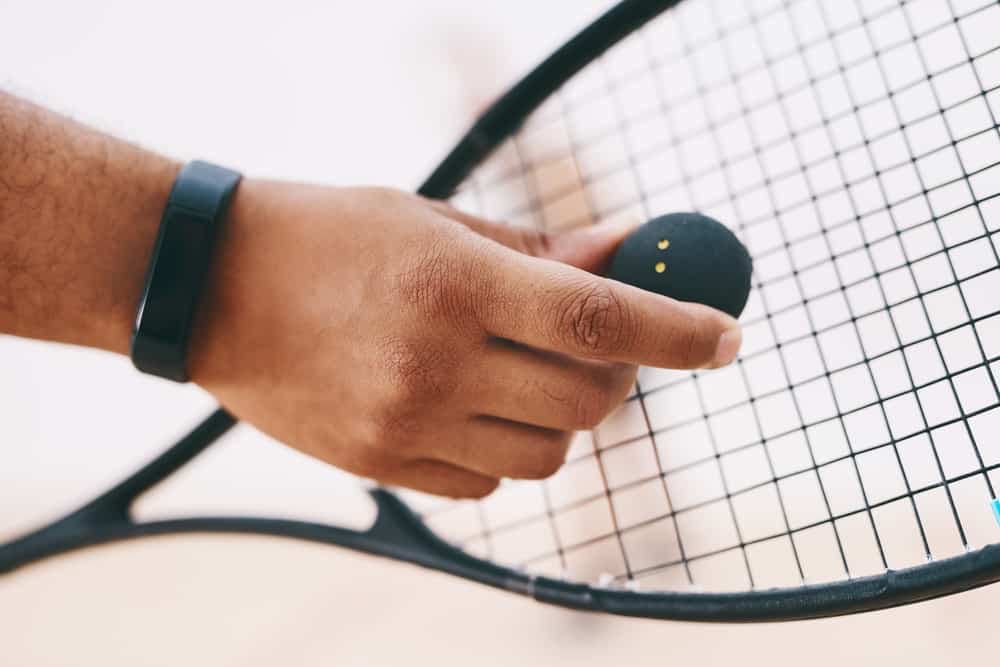
What Is The Fastest Speed Ever Achieved By A Squash Ball
In 2014, Australian player Cameron Pilley hit a squash ball so hard it achieved a speed of 176mph, and the Guinness World Record for a squash ball was established on June 11, 2021, in Philadelphia at the Arlen Specter US Squash Center.
David Hilton III achieved a speed of 166mph, the official world record for the highest squash ball velocity by a male, but didn’t confirm which color ball was used to achieve this record.
For the ladies, Amanda Sobhy achieved a world record speed of 135mph at the same venue on the same day.
Conclusion
The blue dot ball is the fastest in squash and should only be used by beginners as they start their journey to higher fitness and skill levels in this fast-moving and exciting game.
But, now that you know the different colors and which level of players should be using them, you can confidently pick the color ball that best suits your game so you can get the most fun and exercise when playing!
Resources
- https://thesquashcompany.com/squash-balls-what-are-the-coloured-dots/
- https://squashblogger.com/squash-balls-explained-colours-dots-sizes/
- https://www.guinnessworldrecords.com/world-records/425109-fastest-speed-of-a-squash-ball-female
- https://www.guinnessworldrecords.com/world-records/63439-fastest-speed-of-a-squash-ball


